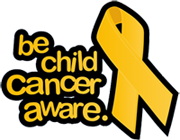Wilms’ tumour is a type of childhood cancer that occurs in the kidneys. The kidneys are a pair of kidney bean-shaped organs, located above the waist on either side of the spine, that filter and clean blood and produce urine.
Wilms’ tumour also is called nephroblastoma, for nephro, meaning kidney, blast, meaning primitive cell and oma, meaning tumour. It is the fifth most common childhood cancer and one of the most common tumours of the abdomen in children. The disease, which affects boys and girls equally, can occur at any age between infancy and 15 years, although it’s usually diagnosed by age 3.
Typically it occurs in one kidney but occasionally involves both. If the cancer spreads, it usually spreads to the lungs and liver. With treatment, many children can have a good prognosis for recovery.
If a tumour is suspected in your child’s abdomen, don’t apply pressure to this area. Careful bathing and handling of your child is important before and during any tumour evaluation. If the tumour ruptures, cancer cells could spread to other tissues of the body.
Children with Wilms’ tumor may experience many different symptoms. The following, however, are the most common:
* Mass or lump, which causes no tenderness, in the abdomen
* Pain in the abdomen from pressure on other organs near the tumour
* Swelling of the abdomen
* Veins that appear distended or large across the abdomen
* Blood in the urine
* Decreased appetite
* Fever
* High blood pressure
* Weakness or tiredness
For further information about Wilm’s Tumour please visit Macmillan Cancer Support


